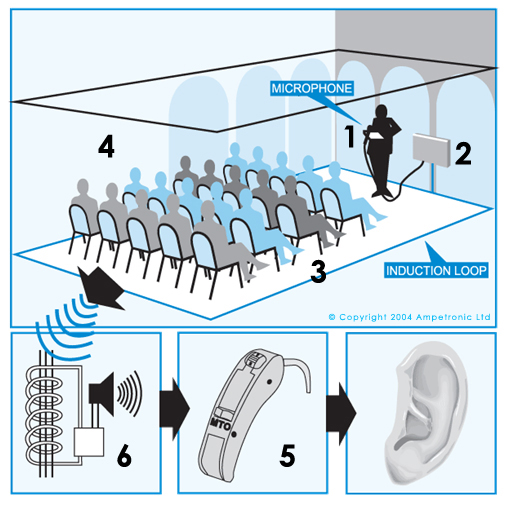Listen Technologies Addresses Hearing Loss

The statistics on hearing loss are staggering: More than 10 percent of Americans—approximately 36 million—experience some kind of hearing loss. As the American Speech-Language-Hearing Association reports, hearing loss in adults has various contributing factors, including age, genetics, noise exposure, and chronic disease.
Grassroots momentum is growing for more candid education about hearing health, and potential solutions. Also noteworthy is the fact that US adolescents are now compromising their hearing at an alarming rate, most likely due to the reliance on earbuds for music playback.
Hear and Now: The Influence of Earbuds
Earbuds are promoted as the alternative to clunky clamshell heaphones, but is there a tradeoff for our hearing? The answer appears to be yes, according to research by the House Research Institute. Listeners regularly exploit the acoustic isolation of buds by listening at higher volumes. But even at "comfortable volumes" it's widely known that the risk of hearing damage is higher with earbuds than speakers due to the proximity of the transducer to the ear drum. Sound is actually being produced in the ear; it is a sonic tsunami of mid- and high-frequencies in your ear canal.
Will teen hearing loss statistics increase as more digital natives listen to not only music but class lectures, news, and films via earbuds?
Hearing Aid Compatibility
Earbuds are just one aspect of the complex reality of hearing loss in America. Another issue that is galvanizing audiologists, consumers, and manufacturers is the fact that manyassistive listening solutions are, surprisingly, not hearing aid compatible. Here's where the Utah-based technology manufacturer Listen Technologies comes in. Listen, known for its sound reinforcement solutions, is now addressing the need for hearing assistance products that are directly hearing aid compatible. In a new partnership with Ampetronic, "Listen will bring hearing loop technology to the Americas, which closes this technology gap," Russell Gentner, president of Listen Technologies, told AV Network today. Ampetronic is a UK-based maker of audio induction loop systems.
A daily selection of features, industry news, and analysis for tech managers. Sign up below.
Hearing Loop solutions are the preferred standard and widespread throughout the rest of the world, according to Listen officials. The demand in North America is escalating as the majority (more than 90 percent) of hearing aids are being specified with T-Coil loop receivers installed.
Gentner explained that the grassroots effort to raise awareness about hearing aid compatibility helped Listen to realize that there was a significant population whose needs were not being addressed by current technologies. The new alliancefills this specific, growing need.
"We now understand that people with hearing loss prefer and will use hearing assistance that is directly hearing aid compatible," Gentner said.Hearing loops can be installed in diverse environments, from larger venues such as theaters, conference facilities, and houses of worship, to smaller one-on-one communication settings such as ticket counters and meeting rooms. Listen Technologies officials say that Mobile Loop solutions also benefit those that need hearing assistance in taxi cabs, trains, and buses.
Compliance With IEC Standards

Unlike RF and IR assistive listening technologies, induction loop requires more careful site planning, system design, and integration. "We realized that to truly bring this solution forward we would need to develop training and certification programs for consultants and integrators," Gentner explained. At InfoComm 2012 in June, Listen rolled out the technology; now the company is offering specific training programs to ensure that, "all loop solutions are designed and installed to meet the IEC [International Electrotechnical Commission]standards and deliver an exceptional experience for the end-user," he added.
The diagram to the right, courtesy of Ampetronic and Listen Technologies, shows how loop induction systems work. Audio Inputs(1), either from an existing audio source such as a P.A. system or from dedicated microphone inputs, feed an audio signal into an Induction Loop Amplifier(2). The amplifier drives a current into a Loop 3 or series of loops. As the current flows through the cable it creates a Magnetic Field (4) in the required area—careful loop and amplifier design ensures that the vertical component of the field is even and free of dropouts and dead zones wherever the user might be. Inside most Hearing Aids (5), a small coil known as a Telecoil (6)picks up the magnetic field signal, which is amplified into a high quality audio signal delivered directly to the ear of the hearing aid user.
Learn more about Listen Technologies Loop Solutions and Training here. Learn more about hearing loss here.
Margot Douaihy is the editor of AV Technology. She has covered AV trends for the past 13 years and has taught at Marywood University in Pennsylvania.
Margot Douaihy, Ph.D., is a lecturer at Franklin Pierce University.

